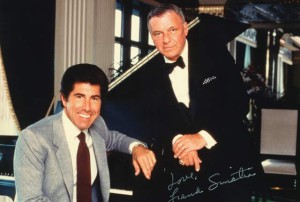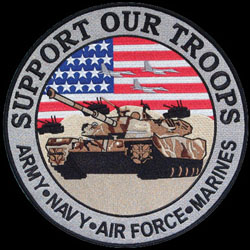Steve Wynn had a vision. Having come to Las Vegas some years earlier, Wynn successfully reinvented the Golden Nugget Casino Hotel in Las Vegas on Fremont Street, a move that would lead to other land owners to renovate their nearby properties, contributing to the revitalization of that part of town. Today, it is nearly as popular as the Strip.
In 1980, recognizing the enormity of the business that was about to erupt along the Atlantic City boardwalk, Wynn bought a large parcel of land at the southern end of the boardwalk on which the old Strand Motel stood. Tearing the old structure down, Wynn set out to give the oceanfront resort its own Golden Nugget. Just a few months after the Brighton, the Golden Nugget opened on Sinatra’s birthday, December 12th, 1980.
By size comparison, it was the second smallest casino at that time on the boardwalk, but the lavish, glamourous décor made the room extremely eye-catching and inviting. Within a few years, it would become the top-earning casino on the entire boardwalk. Armed with that popularity, the successful casino owner set out to lure his next big attraction to the casino: Ol’ Blue Eyes. With Sinatra’s contract ending with Resorts at the end of 1982, Wynn offered Sinatra a new home with the ability to appear at the Golden Nuggets in both Las Vegas and Atlantic City. In Las Vegas, Sinatra had been performing at Caesars’ Palace since 1968, and with relations there souring, Sinatra took Wynn up on his offer, giving him a new residency in both gambling towns.
The entrance of Sinatra as one of the Golden Nugget’s prized acts would lead to a new period of growth and prosperity for the Atlantic City property, buoyed by the creation of a series of television advertisements aired throughout the New York metropolitan area, featuring Steve Wynn, Sinatra, and even one appearance by Sinatra crony Dean Martin. In two of the television spots alone, Sinatra, playfully ignoring the fact that Wynn is the proprietor, keenly reminds Wynn to make sure his suite has extra towels. Another features Wynn walking through the hotel’s restaurant describing its amenities with Sinatra interrupting him in mid-sentence with advice on how to promote better. Biting down on an egg roll, he tells the television audience that “the kid needs work.” Featuring announcement voiceovers by WNEW disc jockey and Sinatra friend William B. Williams, the campaign was a success.
Centerpiece to the hotel’s entertainment success was the 500-seat Opera House theater, where Sinatra would perform throughout his run there. Joint appearances by both Sinatra and Dean Martin were not uncommon during his years at the Golden Nugget, and some of these appearances were even advertised as part of special “Oldest Established Floating Crap Game” weekend-long packages that were snatched up by spectators quickly.
One of the more memorable Sinatra concerts that would live on in taped form was recorded in the Opera House on July 4th, 1986. It was the weekend of the rededication of Liberty Island in the wake of the 100th anniversary of the erection of the Statue of Liberty and Sinatra had just come from a performance the night before of “The House I Live In” before President Reagan and a mass outdoor assembly. Clearly in a jovial mood, Sinatra remarks to the audience about the coldness of the weather. Indeed, that weekend was marred by some of the coldest July weather in history, with the temperature dipping into the forties. Reagan would watch Sinatra sing from the viewing stand wearing an overcoat.
Sinatra entertains the crowd with a delightful mix of the recent and the not so recent, telling a few anecdotes about friend Dean Martin, who was staying in the hospital for a short illness, as well as how he sang “Bewitched” to Rita Hayworth in the film “Pal Joey” due to the fact that Kim Novak would pay him no mind. The bemused audience lost composure when Frank uttered the words: “Kim Novak and Rita Hayworth… marrone, what a sandwich.” Released on the private circuit as “A Jumpin’ July 4th,” it is another unofficially released concert prized by Sinatra fans.
Sadly, Steve Wynn’s association with the city by the sea was not to last. Besides having scuffles with the New Jersey gaming commission, Wynn began to see things he didn’t like happening in the city. The tawdry aspects, some of which can be imagined, he saw occurring would eventually become elements that were accepted as commonplace in the troubled resort. Despite the major cash cow that the Nugget had become, Wynn decided to break free from the resort, and sold the casino to Bally Manufacturing for $440 million in 1987.
With no personal animosity between them, Sinatra decided to jump ship from the Golden Nugget as Wynn was making his exit. With his personal appearances in Las Vegas moving to Bally’s lavish hotel there, Frank, oddly enough, would participate in the rededication and the reopening of the Golden Nugget AC under its new name, Bally’s Grand.
With the addition of a new outdoor amphitheater situated near the building (the “Grandstand”), Frank, along with friends Sammy Davis, JR., Jerry Lewis, and Frankie Randall, participated in the ceremony, preceded by a short concert and presentation, as well as a performance of the famous “The Oldest Established,” before all four pressed on a giant light switch, lighting up the building’s exterior with new signage.
The early 1990s saw Frank reunited with a brand that in his career is now considered legendary. After the Brighton Hotel opened to much fanfare in 1980, they soon found themselves in financial trouble. The same corporation that owned the Sands Hotel in Las Vegas would resuscitate the Brighton by buying a controlling interest in the property, soon renaming it “Sands” after its famous counterpart. Although owners would change hands again within a short time, the hotel would remain under the Sands name via a licensing agreement for the rest of its existence, one that soon became brighter once the name switch was made.
Sinatra’s contract ending with Bally’s paved the way for him to begin using the Sands as his base of operations in the late 1980s/early 1990s. Although he didn’t associate with the Las Vegas hotel (and hadn’t for many years, last there in 1967) anymore, the new ownership allowed him to capitalize on the popularity of association with a hotel name that was synonymous with his most prolific years as a performer.
The Atlantic City Sands would serve as the site for one of his last concerts of all time in late 1994. Although he would move on to do a series of concerts in Japan in December, his concerts at the AC Sands in November would be the last time he would perform in Atlantic City, in his home state of New Jersey, on the East Coast itself. With rumors swirling that he would soon retire, crowds jam packed the Copa Room of the Sands to see the legend one last time. Despite suffering from a cold during the engagement, audience-taken audio portrays a loving, admirable environment between the performer and his spectators. Utilizing a phrase from his famous signature tune “My Way,” the concerts served as a beautiful final curtain for an association with a town that had lasted sixteen years.
Just the mention of the name Sinatra would drive the crowds into Atlantic City during its most profitable decades; his presence alone within the city limits would be a great contributing factor to the rising popularity of the town as a vacation destination in the years when it could have really used the boost
Frank may be gone, but his presence will seemingly always remain. The interviews conducted since his death with local people who saw him in concert or worked at the properties at which he resided (including the old 500 Club) have led to a countless amount of stories and anecdotes that contribute to the notoriety of the Sinatra legend.
***************
Resorts International has not swayed since its 1978 opening. Having added another tower in the intervening years, it is still one of the grandest hotels on the Atlantic City Boardwalk.
Bally’s Grand, formerly the Golden Nugget, would remain profitable until it was sold to the Hilton Hotels Corporation in the late 1990s. It would serve as a Hilton property for more than a decade before being sold to a private company who decided to rebrand the building as the Atlantic Club, a “locals” casino. Although the hotel would go out of business in early 2014, the building still remains at the southern end of the boardwalk, amid stories of rebranding and redevelopment.
The Atlantic City Sands would begin to suffer at the changing of centuries due to its size and inability to expand. With Bally’s Park Place, Resorts, and Caesars all adding additions onto their facilities, not to mention the opening of the megaresort Borgata in the nearby marina section in the early 2000s, the Sands was clearly unable to compete. Amid an honorable shower of fireworks in November of 2006, the Sands was closed and imploded, ironically, a few hours after the death of Joey Bishop, Frank’s “Rat Pack” crony who heckled him backstage at the 500 Club so many years before.
Until next time, Sinatra lovers!
Read Part I: Frank Sinatra On the Boardwalk
Jerry Pearce is an amateur singer in the vein of Frank Sinatra, Perry Como, and Dick Haymes and has released two discs of standards music, Crossroads in 2010, and One Summer Night in 2016. Samples of his music can be heard on his YouTube Channel. To purchase his CDs use the form box below.
[si-contact-form form=’3′]

 June 22nd, 2016
June 22nd, 2016  CEO
CEO 
 Posted in
Posted in  Tags:
Tags: 



